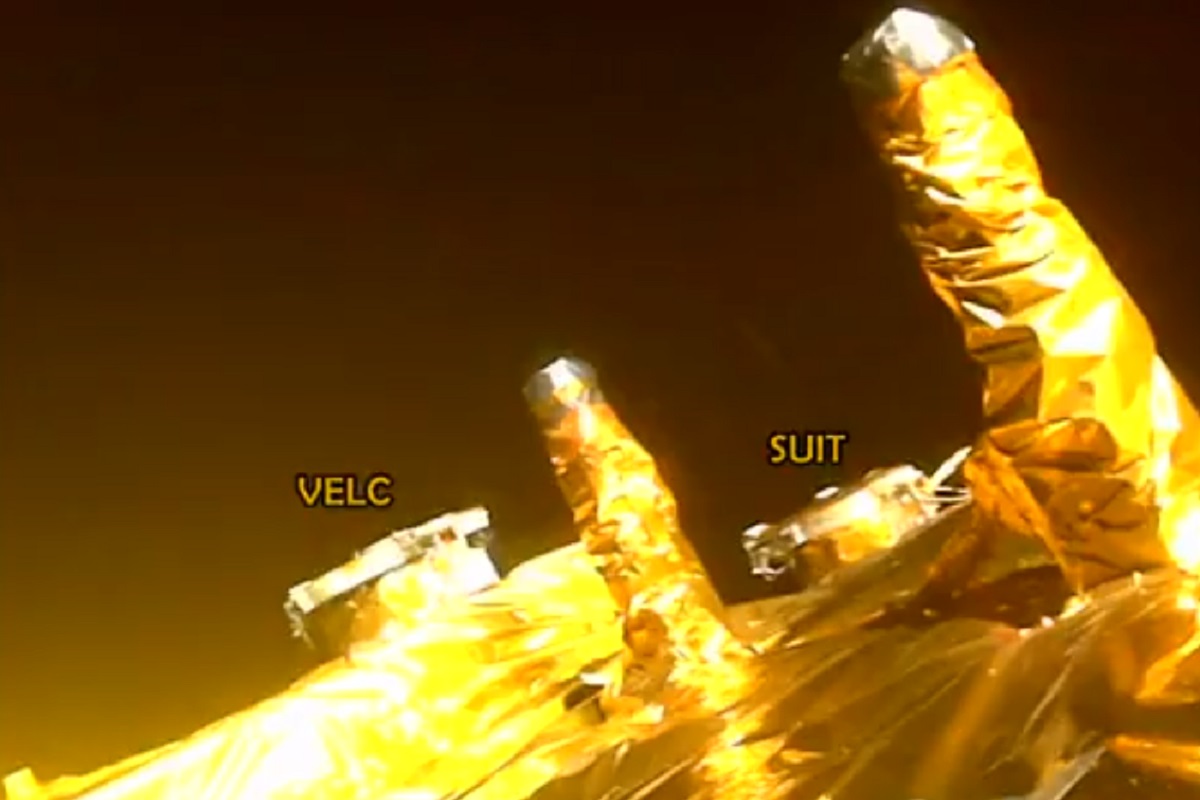Space Leap
India's successful execution of its first-ever space docking experiment marks a pivotal moment in the nation’s space journey, solidifying its position among the global elite.

Image shared by ISRO shows Aditya L1's VELC and SUIT instruments.
The Indian Space Research Organisation or ISRO Thursday shared the first selfie it received from Aditya L1 solar mission. The selfie was clicked on September 4 and shows VELC and SUIT instruments of the solar mission. A camera on-board the Aditya L1 mission also captured a picture of Earth and the Moon.
Aditya L1 is ISRO’s first space-based observatory class solar mission. It was launched successfully from Andhra Pradesh’s Sriharikota on Saturday last week. The mission is destined to reach the Lagrange Point L1 near the Sun-Earth system. It will take around 125 days to reach its destination.
Advertisement
Earlier on Tuesday, the Aditya-L1 spacecraft successfully conducted the second earth-bound manoeuvre. The new orbit attained after the second manoeuvre was 282 km x 40225 km. According to ISRO, it will perform its third earth-bound manoeuvre on September 10.
Advertisement
Aditya-L1 will study the outer atmosphere of the Sun from the Lagrange Point L1. The spacecraft is equipped with seven distinct payloads for detailed study of the sun, four of which will commemorate the light from the sun and the other three will measure in-situ parameters of the plasma and magnetic fields.
Aditya-L1 will stay approximately 1.5 million km away from Earth, directed towards the Sun, which is about 1 per cent of the Earth-Sun distance, the ISRO said.
The agency also clarified that the mission will not land or go anywhere near the sun but will be placed in a halo orbit around Sun-Earth L1 point.
This strategic location will enable Aditya-L1 to continuously observe the sun without being hindered by eclipses or occultation, allowing scientists to study solar actions and their impact on space weather in real time, the ISRO said.
The successful launch of Aditya L1 mission came just days after India made history by landing its Chandrayaan 3 spacecraft on the lunar surface near the south pole region.
Chandrayaan 3’s lander module Vikram and rover Pragyan has now been put to sleep after they completed their mission objectives on the Moon. ISRO will again try to awaken them on the next lunar sunrise.
Advertisement